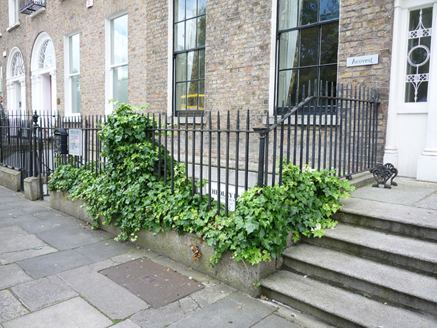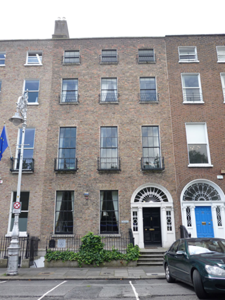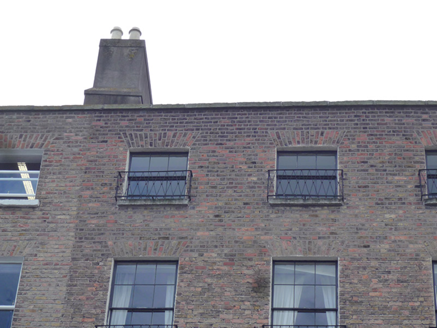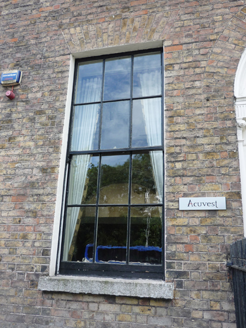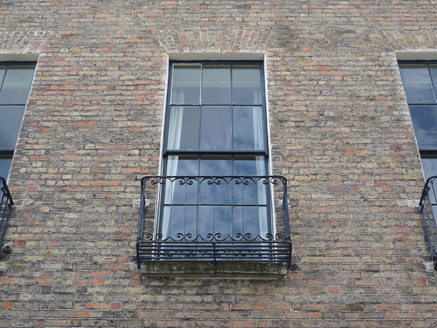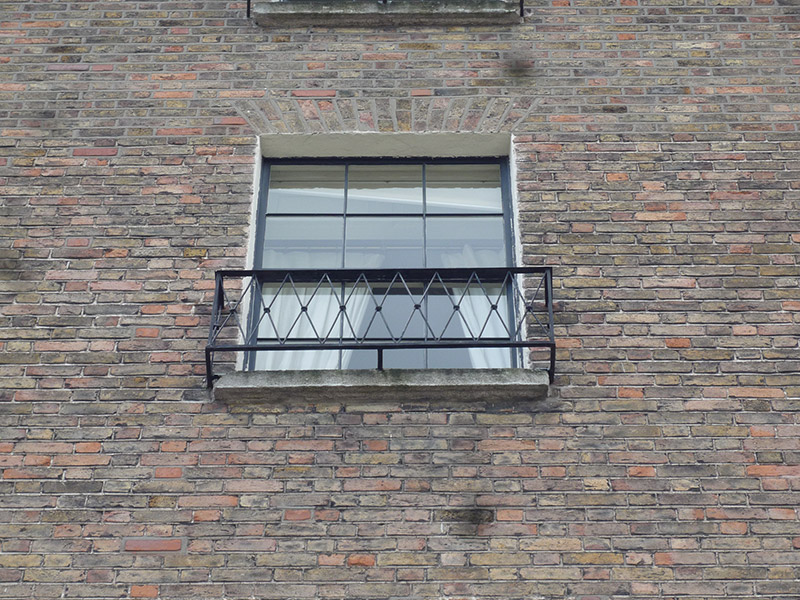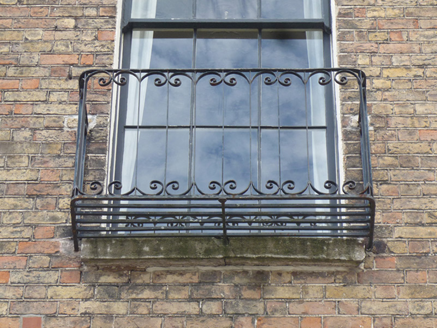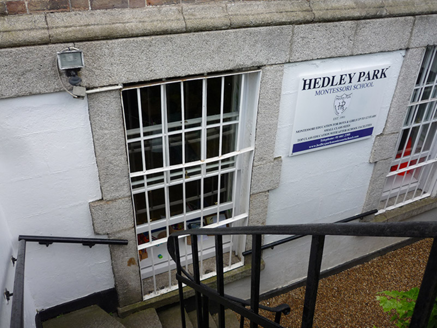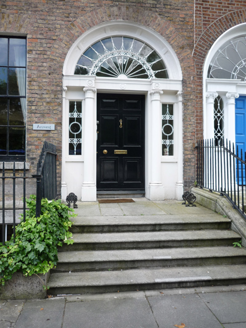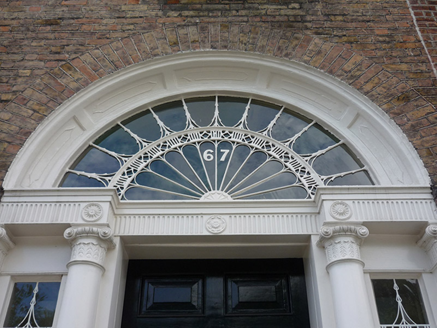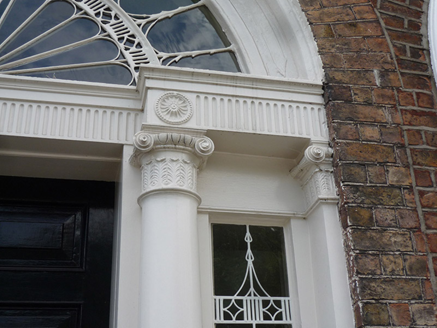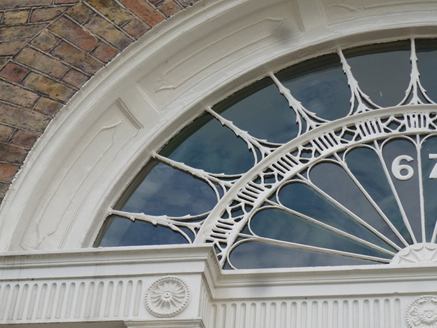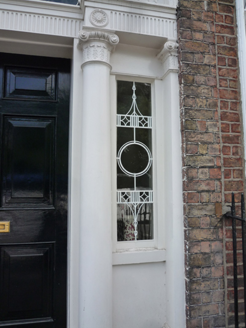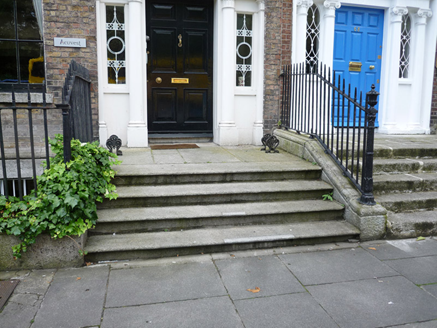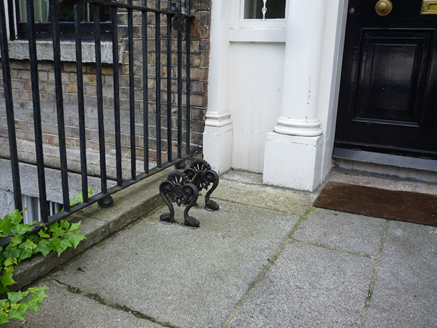Survey Data
Reg No
50100421
Rating
Regional
Categories of Special Interest
Architectural, Artistic
Original Use
House
In Use As
Office
Date
1785 - 1795
Coordinates
316642, 233457
Date Recorded
29/07/2016
Date Updated
--/--/--
Description
Attached three-bay four-storey former house over basement, built c. 1790 apparently as one in terrace of seventeen, having bow to two eastern bays of rear elevation, and two-storey return to third bay. Now in use as offices and school. Pitched slate roof to front, hipped to west end, behind Flemish bond brown brick parapet with granite coping, with two hipped roofs to rear perpendicular to street, larger over bow. Shouldered rendered chimneystacks to east end with clay pots. Concealed rainwater goods. Flemish bond brown brick walls with moulded granite plinth over painted ruled-and-lined rendered walls to basement. Square-headed window openings with painted rendered reveals, soldier arches and painted granite sills, exposed granite block-and-start surrounds and wrought-iron grilles to basement, and round-headed stairs window to rear elevation. Timber sliding sash windows, front elevation having three-over-three pane to top floor and six-over-six pane elsewhere, and rear elevation having tripartite windows with three-over-three pane to top floor, nine-over-six pane to ground floor and six-over-six pane elsewhere, including to return. Decorative wrought-iron balconettes to first floor front and rear, and cast-iron guard-rails to top two floors of front and rear. Round-headed principal doorway with paired Ionic columns flanking decorative leaded geometrically glazed sidelights, stepped fluted frieze and cornice, decorative radial leaded fanlight, panelled cavetto-moulded architrave and six-panel timber door with brass furniture. Granite platform with cast-iron boot-scrapes and four bull-nosed granite steps. Wrought-iron railings enclosing basement area with decorative cast-iron posts on moulded granite plinth. Replacement timber panelled door providing direct access to basement. Casey (2005) notes that interior retains good ceilings. carparking to rear, with concrete block wall to Fitzwilliam Lane.
Appraisal
No. 67 Merrion Square is an elegant Georgian house that forms part of the eighteenth-century square developed by the Fitzwilliam Estate. It has a relatively modest façade that is enlivened by its ornate Ionic doorcase with an unusual and elaborate leaded fanlight and sidelights. The wrought and cast-iron metalwork to the balconettes and railings provides additional features of interest. The building and its intact setting details contribute significantly to the intact appearance of this important architectural set-piece. The square is one of the best-preserved Georgian streetscapes in Ireland. The north, east and south sides are lined with terraced houses of eighteenth and early nineteenth-century date, while the west side is terminated by the garden front of Leinster House. The houses maintain a relatively uniform building height and design, attributed to standards promoted in Fitzwilliam's leases. Individuality was introduced through the design of doorcases, window ironwork and interior decorative schemes. The south side of the square was initially set in large plots of twelve leases; plots were leased consecutively from east to west up until the row was completed in 1791.
